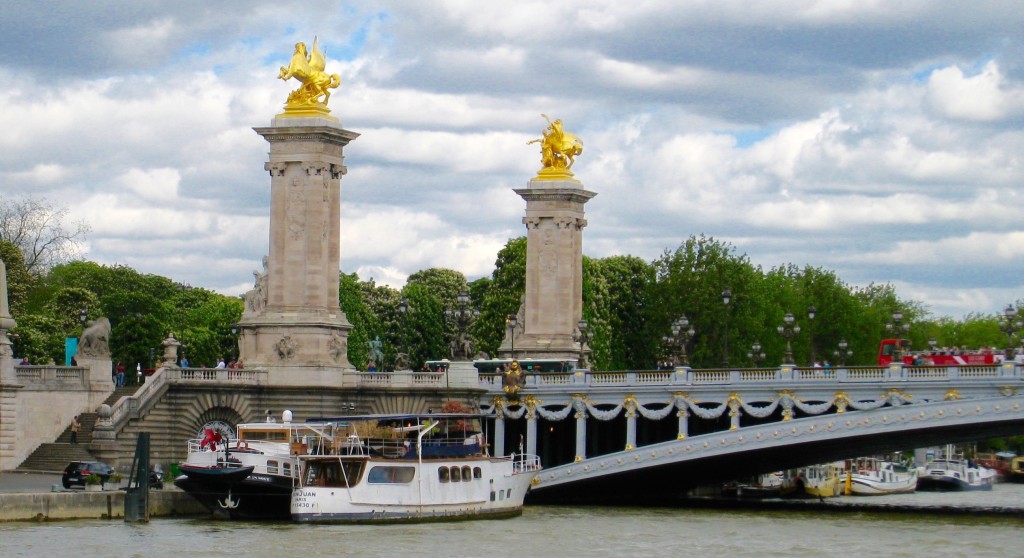 After a fabulous trip to British Columbia and Alberta, I am refreshed and ready to continue my travel blogs, retracing my steps in time to May 2013, when I toured the Burgundy wine region of France, drove to Monaco to watch Monte Carlo set up for the Grand Prix, flew to Lisbon for a visit, and ended my vacation in Spain.
After a fabulous trip to British Columbia and Alberta, I am refreshed and ready to continue my travel blogs, retracing my steps in time to May 2013, when I toured the Burgundy wine region of France, drove to Monaco to watch Monte Carlo set up for the Grand Prix, flew to Lisbon for a visit, and ended my vacation in Spain.
And yes, in a future thriller Darcy and Bullet will follow in my exact footsteps as they race against time to track down a killer before he strikes again. So focused are they on nabbing the murderer that they have no inkling someone else is fervently stalking them—until the hunter has them in his gun sight. Can Darcy stop him before he delivers a lethal blow?
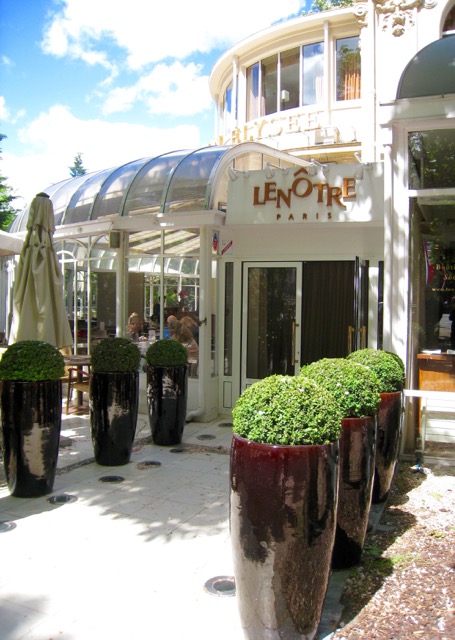 In late 2012, my gypsy husband decided it was high time I saw Paris. No, I had never been. Without missing a beat, he began planning our next trip. In May 2013, we boarded a flight from DFW to London and from there to Paris.
In late 2012, my gypsy husband decided it was high time I saw Paris. No, I had never been. Without missing a beat, he began planning our next trip. In May 2013, we boarded a flight from DFW to London and from there to Paris.
Just before noon, we checked into the Hôtel Duminy-Vendôme in Paris. Famished, we dumped our bags in the room and immediately left for a brisk walk down the Champs-Élysées to Le Café Lenôtre. In my head, I played and replayed Joni Mitchell’s “Free Man in Paris,” as I finally had my chance to stroll the popular boulevard. When we reached the Arc de Triomphe, we retraced our steps to the restaurant.
Seated in a quiet corner on the outdoor patio, we played tourist by poring over a map to chart an agenda for the next few days. We glanced at the menus, ordered, and dismissed the puzzled look on our server’s face; by no means is our French good, but we manage. Our orders arrived and our server left. We looked at each other and burst into laughter. Absorbed in our plans for the days ahead, we had overlooked the fact that an “entrée” in French is a dish served before the main course, i.e., a starter. With the attitude that there is a reason for everything, we ordered two more starters, giving us the opportunity to sample a broader selection of dishes and still leave room for dessert.
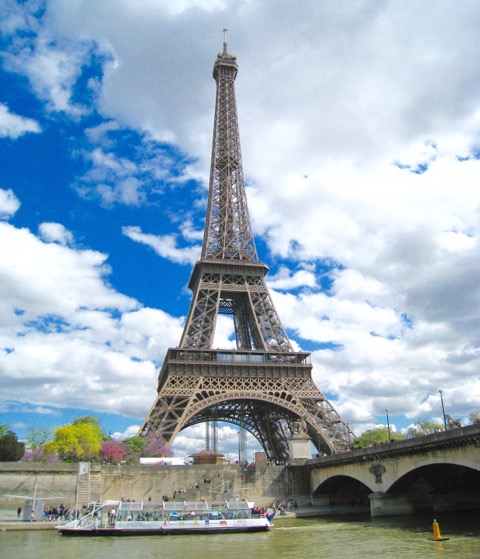 After lunch, we headed to the Seine for a boat cruise down the river. We queued up at Bateaux Mouches, boarded, and settled into our seats on the upper deck for a view of the iconic sites of Paris—Notre Dame, the Eiffel Tower, the Louvre, and the Musée d’Orsay, to name a few. There are some things you should experience once, and the river tour was one of them. From what I’ve heard, the summer tourist crowds can be quite unruly, but fortunately we were subjected to only one discourteous group of six, clad in tank tops and shorts, who soon sought refuge below deck, complaining about the chilly, overcast day. More interested in photographing the Eiffel Tower, I hadn’t paid much attention to the weather other than to consider how it might affect my pictures.
After lunch, we headed to the Seine for a boat cruise down the river. We queued up at Bateaux Mouches, boarded, and settled into our seats on the upper deck for a view of the iconic sites of Paris—Notre Dame, the Eiffel Tower, the Louvre, and the Musée d’Orsay, to name a few. There are some things you should experience once, and the river tour was one of them. From what I’ve heard, the summer tourist crowds can be quite unruly, but fortunately we were subjected to only one discourteous group of six, clad in tank tops and shorts, who soon sought refuge below deck, complaining about the chilly, overcast day. More interested in photographing the Eiffel Tower, I hadn’t paid much attention to the weather other than to consider how it might affect my pictures.
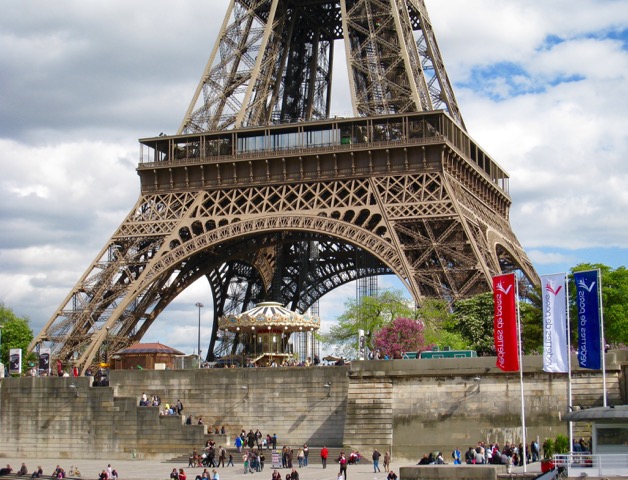 After photographing the Eiffel Tower from a distance, I couldn’t wait for an up-close look at this magnificent structure, so the minute we disembarked from the boat we headed straight there. Ever since I had admired the architecture of the Budapest-Nyugati Railway Terminal, also built by the Eiffel Company, I had wanted see the tower.
After photographing the Eiffel Tower from a distance, I couldn’t wait for an up-close look at this magnificent structure, so the minute we disembarked from the boat we headed straight there. Ever since I had admired the architecture of the Budapest-Nyugati Railway Terminal, also built by the Eiffel Company, I had wanted see the tower.
When we arrived at the famous landmark, I was awestruck by the massiveness of the iron structure. It was impressive in size and construction, and I was looking forward to dinner at the Jules Verne restaurant—for the food, but more so for what I anticipated would be a breathtaking view of Paris. However, I would have to wait. That night, we had reservations at Kunitoraya and planned to retire early, as jet lag had begun to set in.


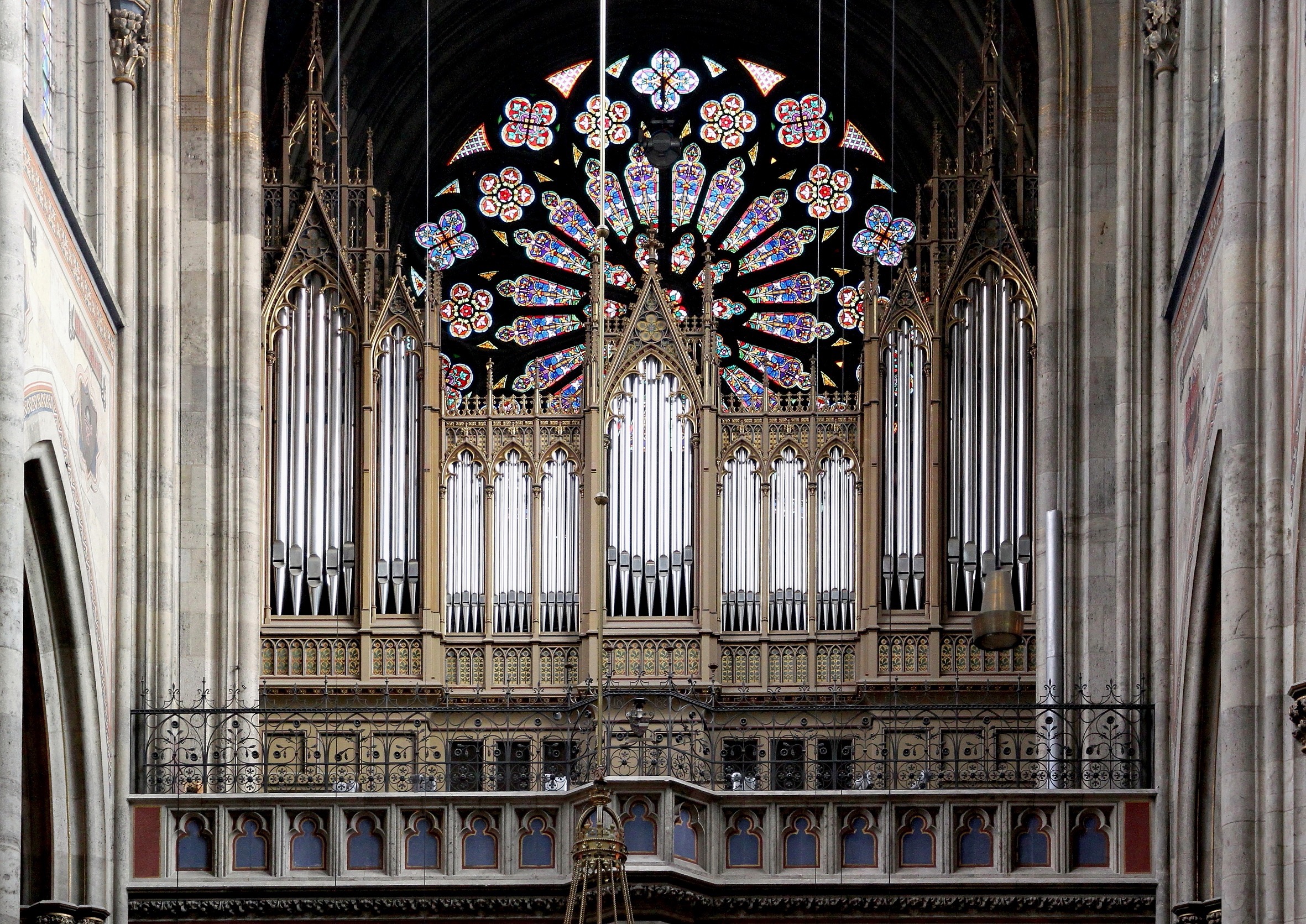
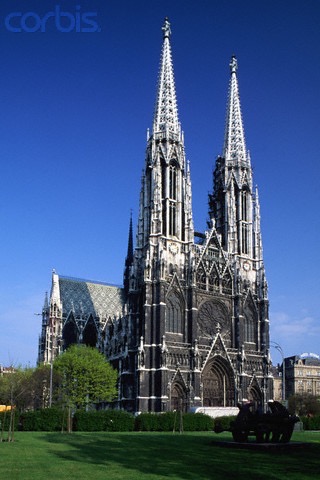

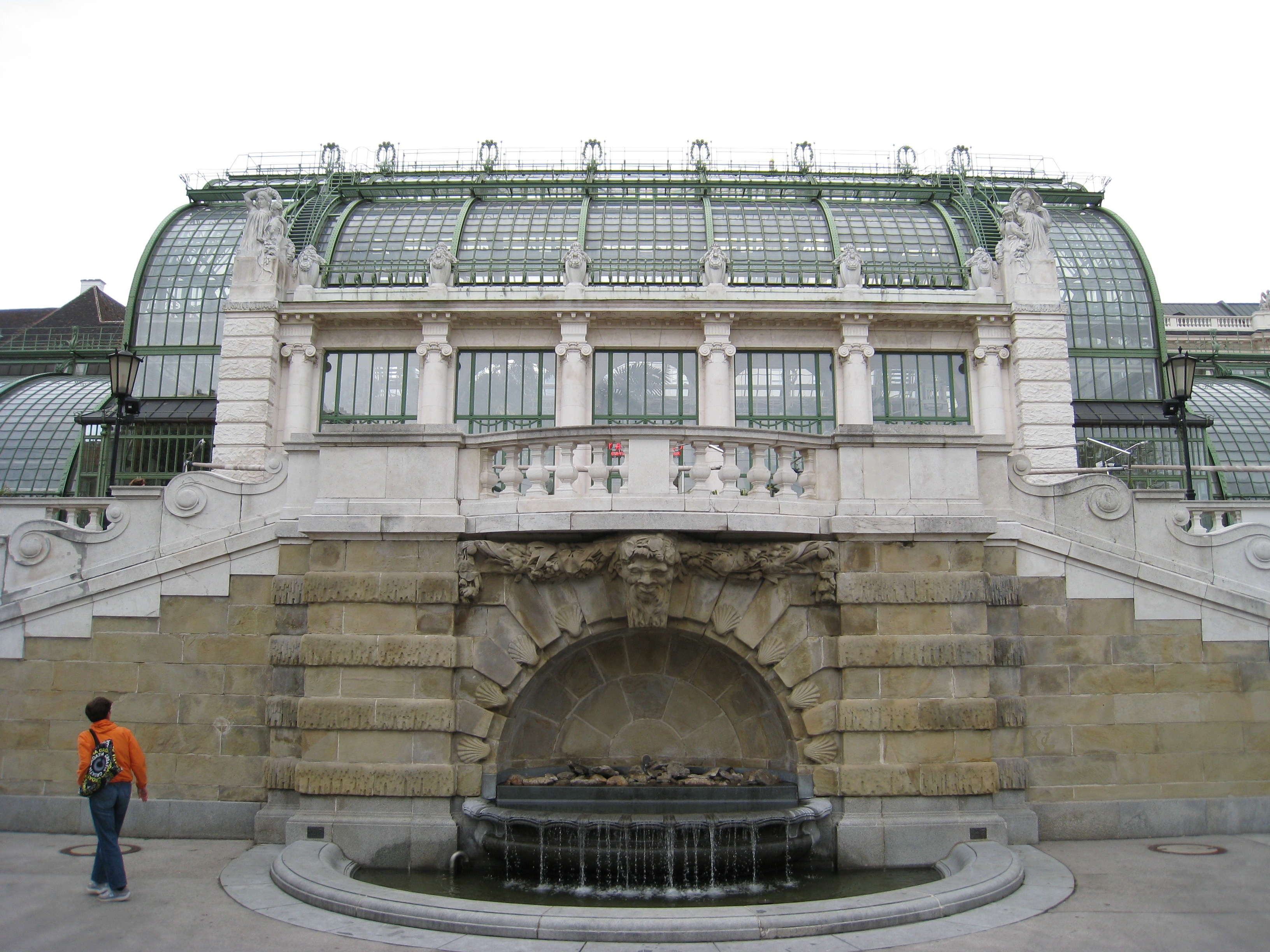
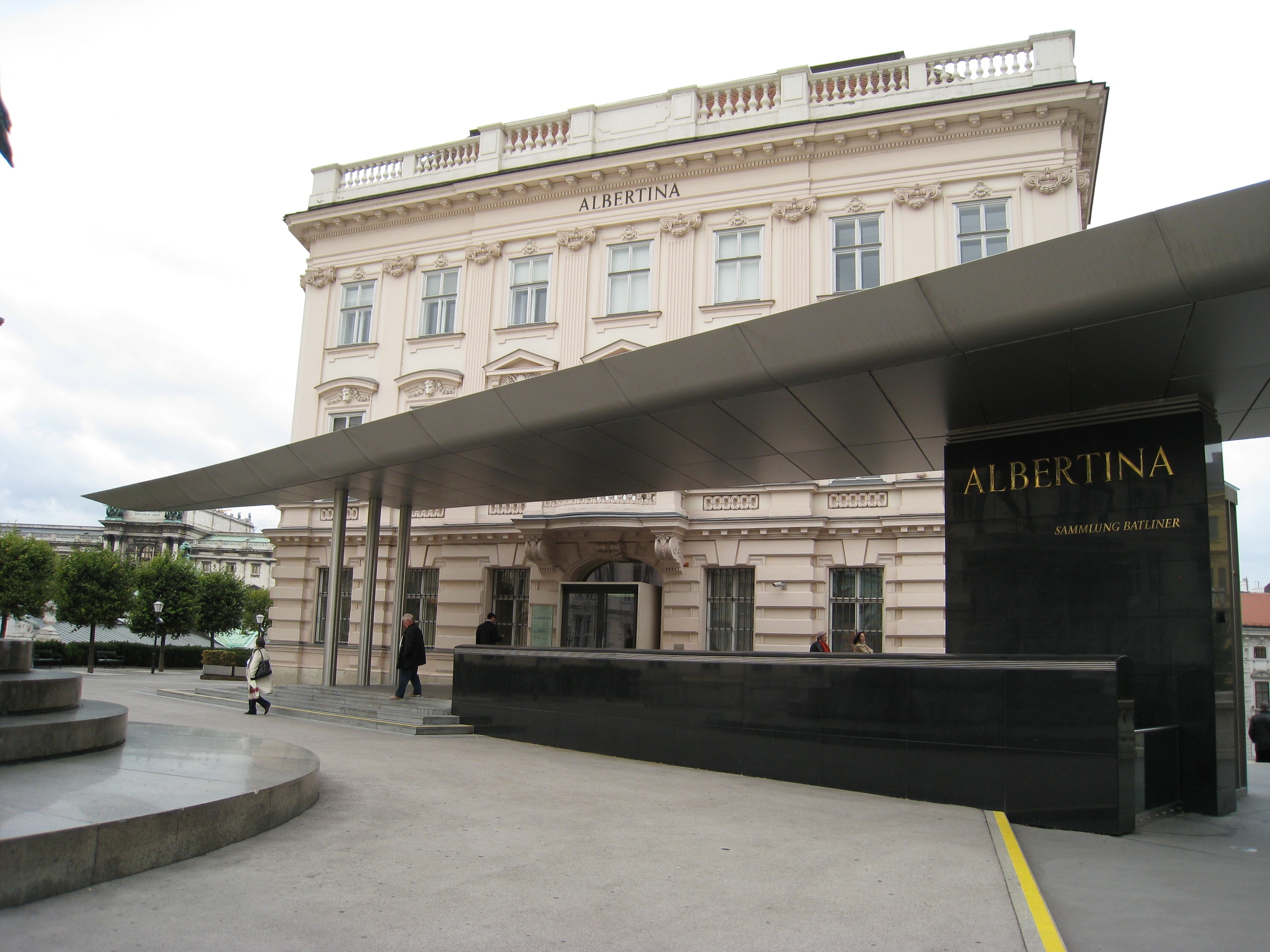
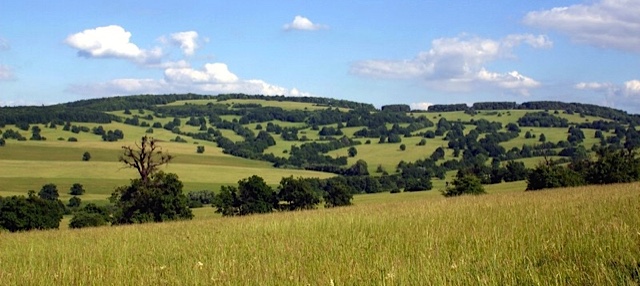
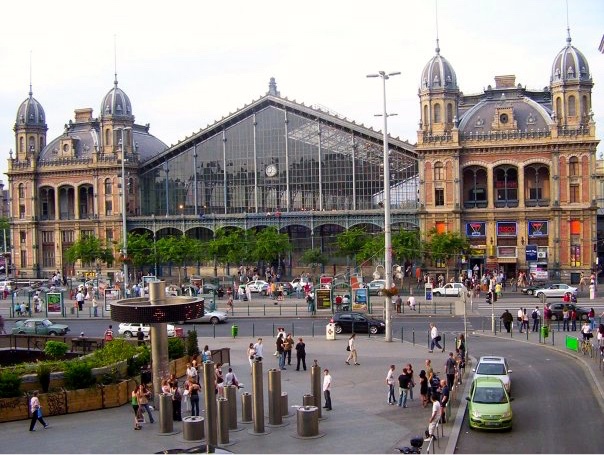 I was quite taken by the architecture of the building. Not modern by any means, but the unique design reminded me of something, but I couldn’t think what. Later, after some research, I found my answer.
I was quite taken by the architecture of the building. Not modern by any means, but the unique design reminded me of something, but I couldn’t think what. Later, after some research, I found my answer.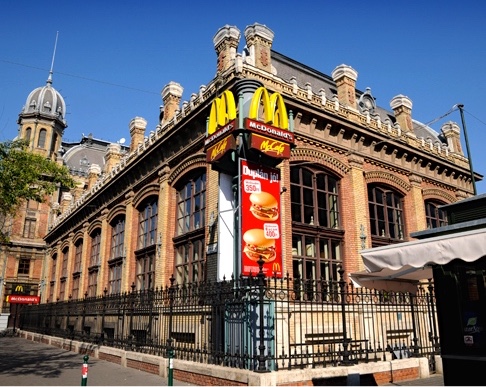 The Western Railway Station was designed by August de Serres and built by the Eiffel Company of Paris. The construction took three years to complete, and the iron building was cast in Paris. The station opened in 1877, twelve years before the Eiffel Company built the famous Eiffel Tower. To date, the train station has retained its original style. Over the years most of the old iron structure has been recast and replaced. Yes, the building houses a McDonald’s, but as many have said—and I agree—it is the most beautiful McDonald’s in the world.
The Western Railway Station was designed by August de Serres and built by the Eiffel Company of Paris. The construction took three years to complete, and the iron building was cast in Paris. The station opened in 1877, twelve years before the Eiffel Company built the famous Eiffel Tower. To date, the train station has retained its original style. Over the years most of the old iron structure has been recast and replaced. Yes, the building houses a McDonald’s, but as many have said—and I agree—it is the most beautiful McDonald’s in the world.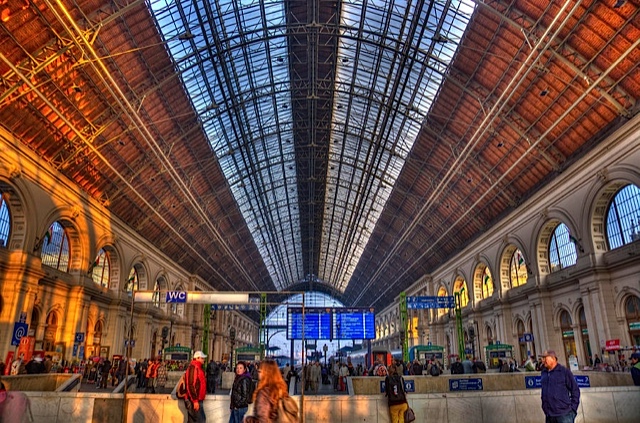 Slightly lost as to which train to board, we were scoping out the station when a man hurried toward us saying, “Prague?” He yanked my roller bag out of my hand and took off. I scurried after him. He climbed the steps to a nearby train and demanded my ticket. I showed it to him but held on tight to it. He ushered us toward a compartment, hoisted my bag, along with Dave’s, into the overhead rack, and stuck out his hand. Dave gave him the equivalent of a six-dollar US tip in forints. The man looked at the money, looked at Dave, and back to the money, all the while shaking his head. Then he said, “Euros.” Dave dug into his pocket, took out the equivalent of an additional four dollars US, and said, “That’s it. No more.” Grumbling, the man walked away with his ten-dollar tip.
Slightly lost as to which train to board, we were scoping out the station when a man hurried toward us saying, “Prague?” He yanked my roller bag out of my hand and took off. I scurried after him. He climbed the steps to a nearby train and demanded my ticket. I showed it to him but held on tight to it. He ushered us toward a compartment, hoisted my bag, along with Dave’s, into the overhead rack, and stuck out his hand. Dave gave him the equivalent of a six-dollar US tip in forints. The man looked at the money, looked at Dave, and back to the money, all the while shaking his head. Then he said, “Euros.” Dave dug into his pocket, took out the equivalent of an additional four dollars US, and said, “That’s it. No more.” Grumbling, the man walked away with his ten-dollar tip.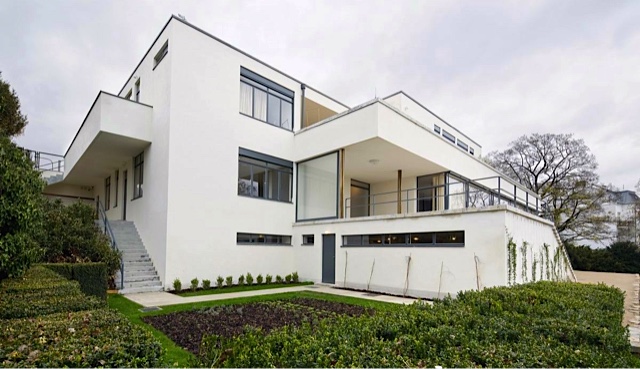 Some friends who had taken the same train trip the year before said the scenery offered nothing noteworthy, so pack a good book. I planned to spend the time writing my next book. However, I had read Brno was the most scenic part of the trip, and after scrolling through images on the Internet, I realized this town would have been an interesting place to visit for its scenery—and its architecture. From the moment I first saw a photo of German architect Ludwig Mies van der Rohe’s Villa Tugendhat, an icon of modernism, I found it hard to pass Brno by. But I had no option; it all came down to time.
Some friends who had taken the same train trip the year before said the scenery offered nothing noteworthy, so pack a good book. I planned to spend the time writing my next book. However, I had read Brno was the most scenic part of the trip, and after scrolling through images on the Internet, I realized this town would have been an interesting place to visit for its scenery—and its architecture. From the moment I first saw a photo of German architect Ludwig Mies van der Rohe’s Villa Tugendhat, an icon of modernism, I found it hard to pass Brno by. But I had no option; it all came down to time.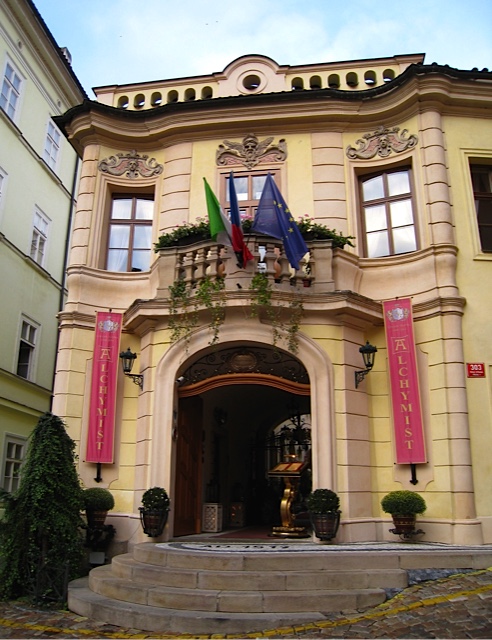 Six hours later, we pulled into the Prague train station and wished Kath and Tom goodbye, then walked the two blocks to the taxi stand, where we caught a ride to the Alchymist Grand Hotel. As we neared our accommodations, an officer at a police checkpoint stopped and searched our cab. Later, we found out the Alchymist was located across the street from the US Embassy, and the search was a precaution. I noted this incident for a future book scene.
Six hours later, we pulled into the Prague train station and wished Kath and Tom goodbye, then walked the two blocks to the taxi stand, where we caught a ride to the Alchymist Grand Hotel. As we neared our accommodations, an officer at a police checkpoint stopped and searched our cab. Later, we found out the Alchymist was located across the street from the US Embassy, and the search was a precaution. I noted this incident for a future book scene.